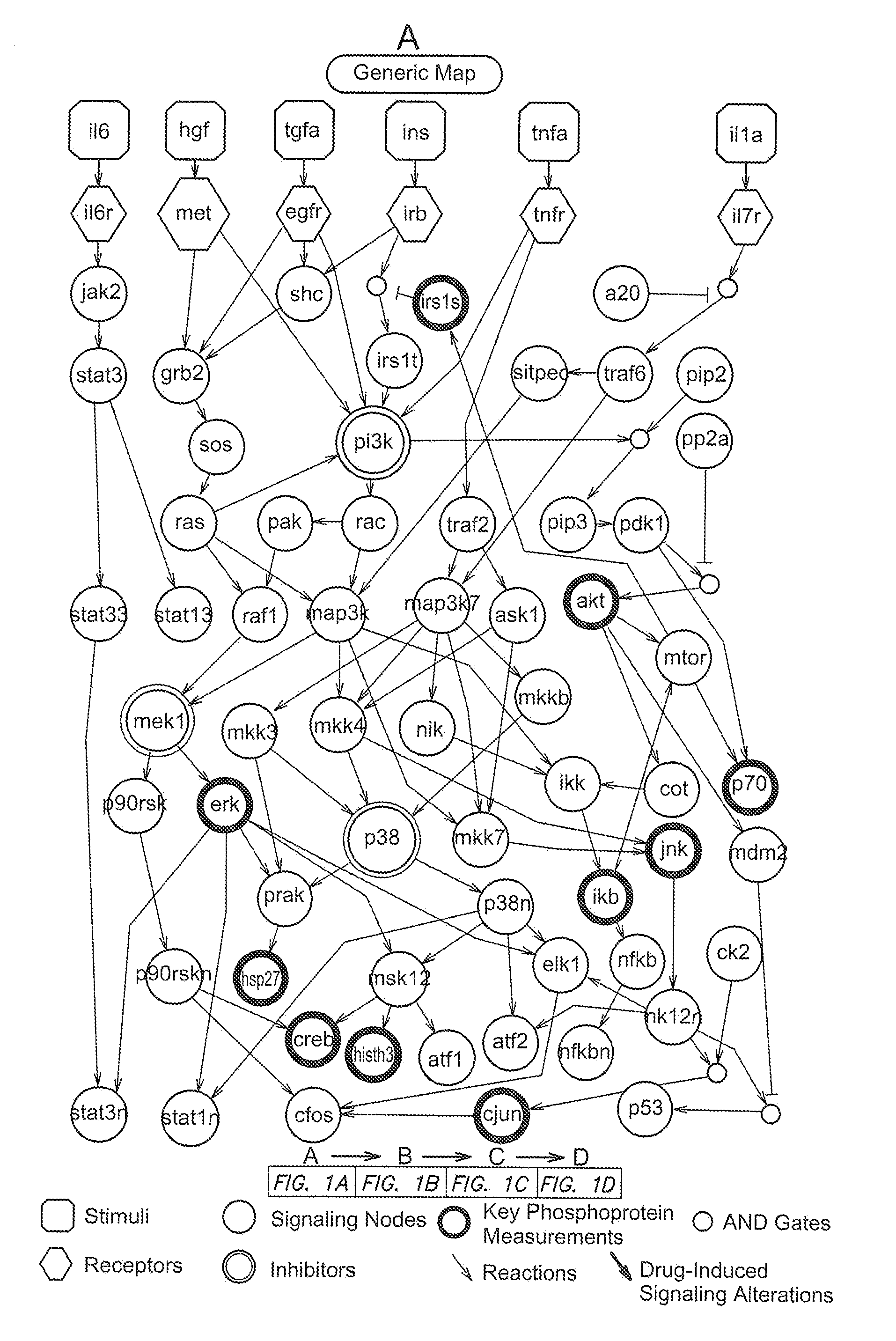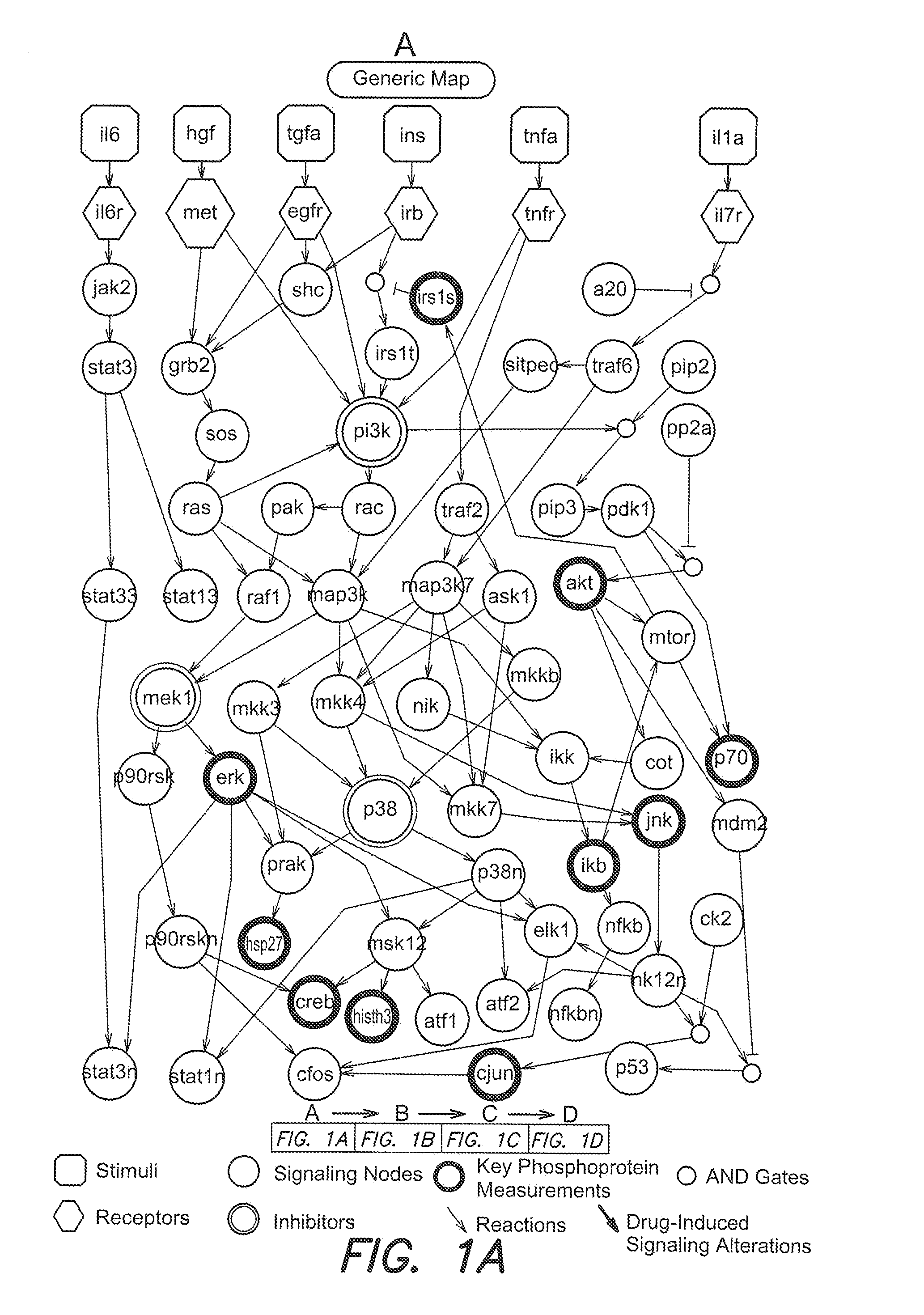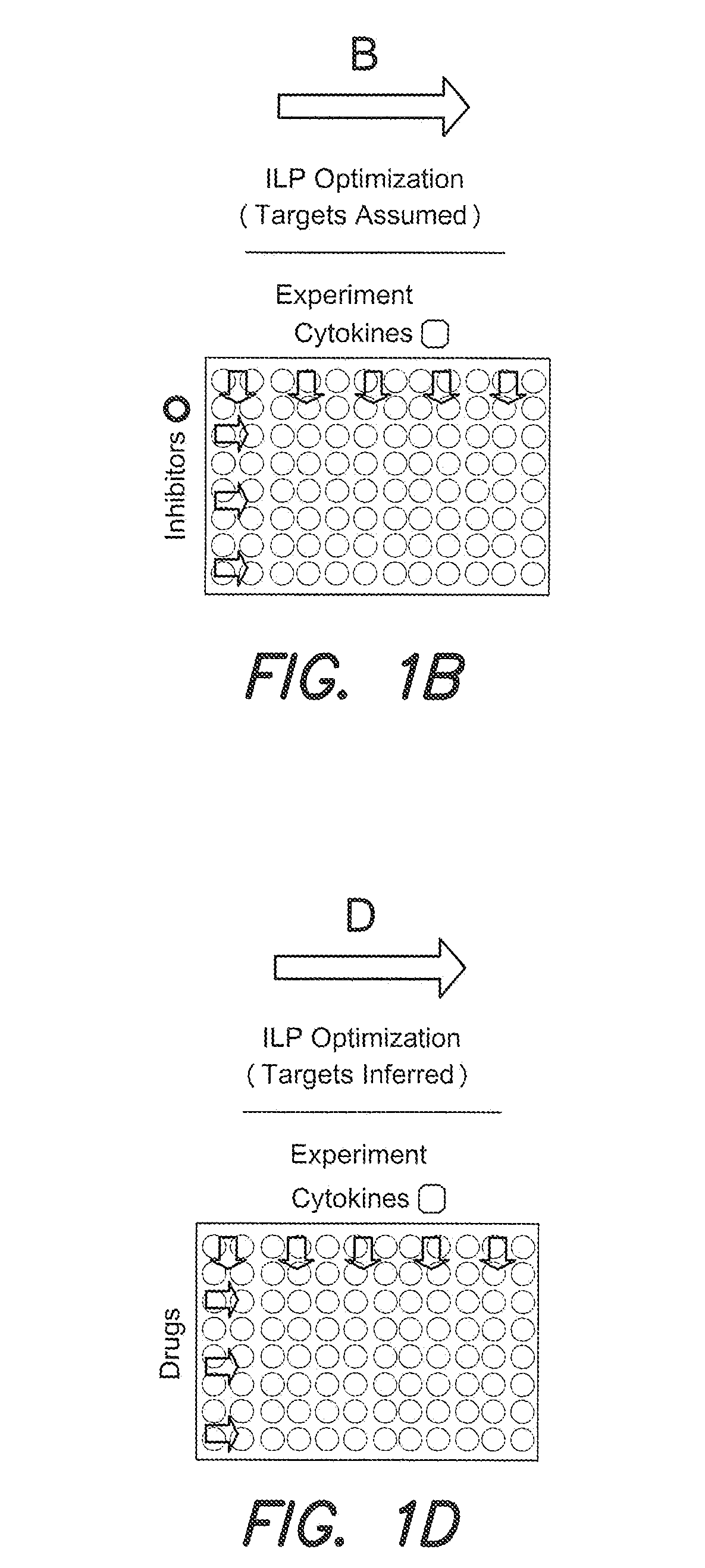Identification of drug effects on signaling pathways using integer linear programming
a signaling pathway and linear programming technology, applied in the field of drug action, can solve the problems of overly simplistic representation of a complex biological system, inability to accurately represent biological interactions in logical models, and increased degree of realism in such models, so as to improve drug efficacy and safety.
- Summary
- Abstract
- Description
- Claims
- Application Information
AI Technical Summary
Benefits of technology
Problems solved by technology
Method used
Image
Examples
example
Experimental Procedure: Phosphoprotein Dataset
[0104]HepG2 cells were purchased from ATCC (Manassas, Va.), and seeded on 96-well plates coated with collagen type I-coated (BD Biosciences, Franklin Lakes, N.J.) at 30,000 cells / well in DME medium containing 10% Fetal Bovine Serum (FBS). The following morning, cells were starved for 4 hours and treated with inhibitors and / or drugs. Kinase inhibitors were used at concentrations sufficient to inhibit at least 95% the phosphorylation of the nominal target as determined by dose-response assays (presented in [17]). AKT was chosen as the nominal target for Lapatinib, Erlotinib, and Gefitinib. The following saturated concentrations were used: p38 (PHA818637, 20 nM), MEK (PD325901, 100 nM) and cMET (JNJ38877605, 1 μM), PI3K (PI-103, 10 μM), Lapatinib at 3 uM [47], Erlotinib at 1 uM [47], Gefitinib at 3 uM [47], and Sorafenib at 3 uM (based on its inhibitory activity on ERK1 / 2 phosphorylation [33]). Following incubation for 45 minutes with inhib...
PUM
| Property | Measurement | Unit |
|---|---|---|
| Error | aaaaa | aaaaa |
| Interaction | aaaaa | aaaaa |
Abstract
Description
Claims
Application Information
 Login to View More
Login to View More - R&D
- Intellectual Property
- Life Sciences
- Materials
- Tech Scout
- Unparalleled Data Quality
- Higher Quality Content
- 60% Fewer Hallucinations
Browse by: Latest US Patents, China's latest patents, Technical Efficacy Thesaurus, Application Domain, Technology Topic, Popular Technical Reports.
© 2025 PatSnap. All rights reserved.Legal|Privacy policy|Modern Slavery Act Transparency Statement|Sitemap|About US| Contact US: help@patsnap.com



